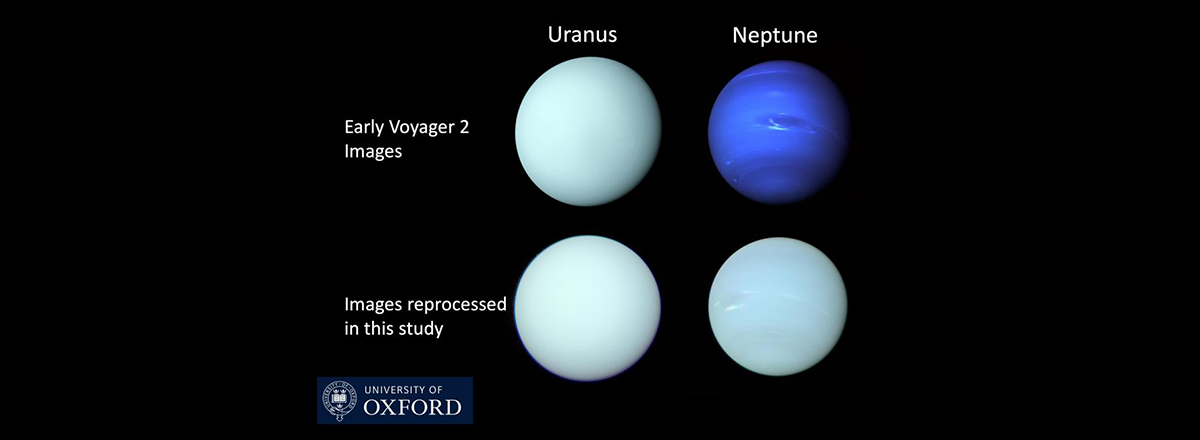New Images Reveal the True Colors of Neptune and Uranus
Astronomers believe that this comprehensive study will finally put to rest the misperception of Neptune's color and the puzzling color changes of Uranus that have perplexed scientists for decades.

Images of Neptune and Uranus captured by NASA's Voyager 2 spacecraft in the late 1980s have long puzzled scientists due to the strikingly different colors of these two similar planets. Uranus appeared as a pale cyan while Neptune displayed a deep azure blue. However, a recent analysis of these images has uncovered a surprising revelation: both planets share a similar shade of greenish-blue.
The misconception about their colors arose from the way Voyager 2's images were processed. The early images of Neptune were stretched and enhanced to emphasize contrast, making the planet appear more blue than it actually is. In contrast, Uranus's images were processed closer to its true color.
To resolve this long-standing mystery, researchers used data from the Hubble Space Telescope and the European Southern Observatory's Very Large Telescope to determine the planets' true colors. They discovered that Neptune is much lighter than previously believed, with its color closely resembling that of Uranus. The primary difference is that Neptune has a slightly bluer hue, likely due to a thinner layer of atmospheric haze.
Furthermore, this research shed light on another enigma: why Uranus undergoes subtle color changes during its 84-year orbit around the sun. Uranus appears slightly greener at its solstices when one of its poles faces the sun, and bluer during equinoxes when the equator faces the sun. This phenomenon is a result of Uranus's unique orientation.
Astronomers believe that this comprehensive study will finally put to rest the misperception of Neptune's color and the puzzling color changes of Uranus that have perplexed scientists for decades.

